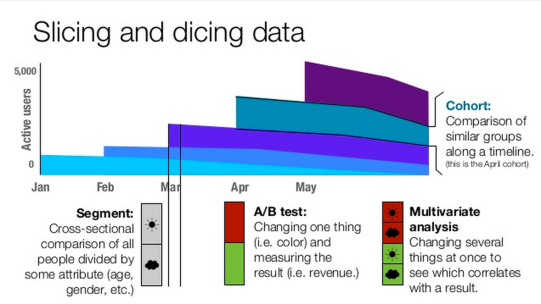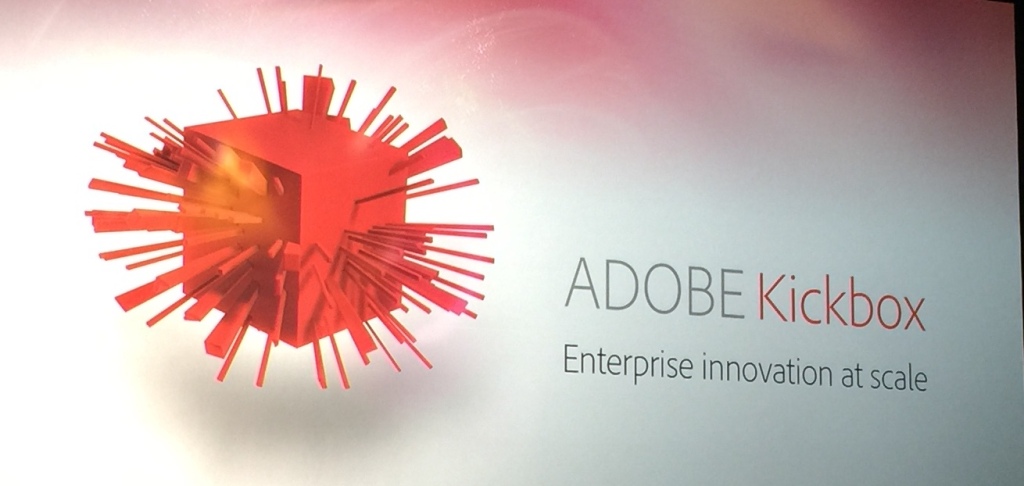Last week I was fortunate enough to attend the Lean Startup conference. In case you’ve had your head buried in the sand for the last four years – Eric Ries‘ incredibly popular business book, The Lean Startup, begat the conference and has a growing attendance and community every year.
For me, the Lean Startup is basically the scientific method applied to business. One could argue that the arts of management consultancy and MBA have been doing this for sometime, just as an engineer can apply proven science to have confidence that a component will perform in a specific way under certain conditions. However, the reality of businesses is far from this today. The context is extreme uncertainty and if planes were built like traditional businesses in that context, I’d never get on one*.
Build. Measure. Learn.
The practice of lean is to hypothesize, experiment, analyze results (usually data) and iterate to success. The movement is becoming hugely popular and I’m a big fan.
Much of this may sound familiar to practitioners of ‘Agile’ development. But in truth agile usually starts from requirements. With Lean you get iterative much earlier in the lifecycle of your business (often before you write any code, more on this below). You need to be agile in understanding your requirements and even who your customer might be. Not so much sell what you can build as build what you can sell.
The conference had some excellent speakers. We got to visit with a number of ‘Lean’ organizations and incubators including Highway 1, Creative Live and 18F (yup, that last one is a .gov, more on that later). I got to spend the whole day with the awesome Alastair Croll, author of my favorite lean-series book: Lean Analytics.
The conference was epic. Sessions ran from 9am to 10pm and there was just too much for me to comprehensively cover here. However, I do want to take this chance to summarize the keystones of my new understanding of the lean community. I’ll start with some highlights from one of my favorite sessions, from Bill Gross of idealab.
No excuses
Bill Gross founded Idealab in 1996 and has arguably been practicing many Lean Startup principles since long before the book was written, especially the idea of the MVP or Minimum Viable Product. Bill has the energy of a caffeinated 12-year old and gave one of the most inspirational talks at the conference, sharing some of his amazing MVP stories.
My takeaway from Bill’s talk, was that there really are no excuses. You can build an MVP to prove your idea and you can test it, on any budget. He shared many stories, but I’ll highlight just a few that specifically resonated for me, like CarsDirect.com.
In a fairytale eureka moment, the idea for CarsDirect.com came to Bill following a (typically) unpleasant experience buying a car. He knew what model, color and options he wanted but the dealership didn’t have this in stock and spent a lot of time persuading him to take another car that was in stock rather than place a backorder. He wondered, wouldn’t people prefer to just do this online and avoid the whole meat-grinder of the salesroom? At the time, few things were bought online. Users were frightened to use their credit cards on the web and Amazon was still in it’s infancy.
In true MVP style, Bill and his team created an extremely simple website for CarsDirect.com to test his hypothesis. There was no car selector widgets; users had to type freeform text to describe the car they wanted! However, there was a box for a credit card number – they wanted to be sure that customers were serious and thus asked for a deposit to place an order. There was no backend behind this, they didn’t even use or store the credit card numbers – they were just testing the viability of the idea. Now all they had to do was sit, and wait. Not expecting anybody – in the infancy of eCommerce – to actually order a car and be willing to place a deposit via credit card with an unknown, unreviewed website. A few days later they had 4 orders and the rest, as they say, is history.
A later innovation, Pantry Mate was a bluetooth scale that would sense when a consumable (like coffee beans) was getting low and automatically re-order. How do you test a product like this in as lean a manner as the CarsDirect.com MVP? Easy – they created mock product packaging, ‘reverse-stole’ them onto the shelves at Bed, Bath and Beyond and just watched. That’s right – they took their product into a store, without permission, and found some shelf space. This is Bill’s genius at work.
He did something similar with another product, aimed at children in education called Jump Start. Finding the best product placement in an appropriate store and watching customers. They observed a series of customers picking up the product and after spending a short while reading the packaging, they returned it to the shelves. But why? These appeared to be the perfect target customer?
Upon investigation, they found that these customers doubted the quality or fit as it targeted too broad an age range. They’d be more successful with a range of packaging targeting specific ages – ‘Jump Start Kindergarten’ is more attractive to a Kindergarten parent than ‘Jump Start K thru 5’.
Get out of the building
The Jump Start experiment above typifies how the LeanStartup community feel about the importance of talking to customers and the benefits of doing so.
It’s easy to forget this. We talk to customers all the time. Our advisors, prospects, conference attendees, people who reach out with issues – anybody who’s willing to talk to us. But how good are we at reaching into the belly of our customer base and talking to those who aren’t just presented to us? Those who tried the service and left quietly? Those who ‘picked up the package but put it back on the shelf and walked out’?
Process > Tactics
 Part of the event affords Gold and Platinum pass holders the opportunity to join an ‘Office Hours’ with their experts and mentors. I was lucky enough to spend some time with Hiten Shah, CEO and co-founder of KISSmetrics.
Part of the event affords Gold and Platinum pass holders the opportunity to join an ‘Office Hours’ with their experts and mentors. I was lucky enough to spend some time with Hiten Shah, CEO and co-founder of KISSmetrics.
I wanted to pick Hiten’s brains on being data-driven and settling debates about some of the minutiae. We talked for a long time about what to measure, what not to measure, when to measure, how to measure, you get the idea… With each specific example there was a discussion about the trade off of cost of measure vs benefit (e.g. lost engineering time implementing telemetry vs can we actually use the data). I liked Hiten’s way of thinking about this, how it was a trap and you should focus on the process. Being data-driven, adding telemetry and analyzing the data needs to become muscle memory: cheap, automatic and thoughtless. Data is like a stress toy, as you squeeze one question, more emerge. Focus on the process not the tactics.
Don’t mix the soups
In being data-driven there’s a few important things to remember. Averages are misleading – when grandma visits the average age of the classroom leaps up dramatically – but you knew that already. Another important idea is the correct application of cohorts.
Your product has been improving over time. A cohort is a slice of your customers organized by timeline. When comparing customers we “mustn’t mix the customers that tasted the awesome July soup with those that tried the awful January soup”. Check out Alastair’s full and epic slideshare (361 slides!).
Success is a barrier to change
A huge percentage of content at the event was focussed on corporate innovation and the challenges faced by intrapreneurs – those who want to bring LeanStartup to their already successful, large employer.
Such large businesses seem aware of the need to support this. In fact, many have gone much further and have actively created internal innovation programs in their business to find ways to disrupt themselves and not fall foul of the innovator’s dilemma.
One interesting twist on this idea was PCH International‘s Highway 1. PCH specialize in hardware manufacture and supply chain management and as such created an incubator specializing in hardware startups. Highway 1 currently houses a number of high profile early stage businesses including navdy and a personal favorite: switchmate.
An interesting way for PCH to ‘stuff their own pipe’ whilst fostering these exciting small hardware businesses.
Any smart CEO can see the importance of reinventing their own processes and embracing innovation at this time. There’s a genuine sense that we’re at a new zenith in business change right now and both the risks and opportunities are huge. This was evident in the sheer number of large organizations that had significant attendance or were presenting at the conference. Here’s just a few employers of people I met at the event recalled from memory: Google, Toyota, Cisco, Yammer (Microsoft), HP, Thomson Reuters, Davidson College (177 year old educational institution), Telefonica and Adobe. It’s not just for startups.
As the idea of experimentation matures in the lean community, there’s a growing swell around the idea that evolution trumps intelligent design. That is, if you can run more experiments and let data decide the winner, you stand a higher chance of being successful. Which raises the question, how do you dramatically increase the number of experiments?
Adobe had one of the most interesting presentations on corporate innovation with their kickbox project which aimed to answer exactly this question. Kickbox is a formalized innovation program that itself has been productized. A selected employee receives a red box that contains resources necessary for them to run an innovation experiment. Lots of enterprises are running similar programs (but without the beautiful graphic design) but the real innovation in kickbox is the inclusion of a $1000 pre-paid credit card. The recipient can spend this on their experiment however they like with no need to file receipts or submit expense reports. Anybody reading this who works at a large organization just had their head explode.
Table stakes
The Lean Startup conference is comfortably one of my favorite events and this is just a pinch of my highlights. To conclude the article I want to close with my biggest learning at the event. This wasn’t yielded from a single session or discussion but was innate and ingrained. It was apparent in the experiences of the experts and attendees.
The Lean Startup approach is no longer an advantage, it’s table stakes.
Nothing made me realize this more than my visit to 18F, the part of the US Federal Government that is driving lean and agile throughout the GSA (General Services Administration). A team of fearless, talented and dedicated folks who come to work and hack at a previously immovable corporate culture to allow themselves to move at the speed of startups. And they’re already demonstrating results. If they can do it, you have to.
Follow Josh on Twitter @joshtwist
*written on the flight back from San Francisco.


Josh,
Interesting info, many thanks for sharing!!
It creates a number of actions I need to take!
rgds,
Menno
LikeLike